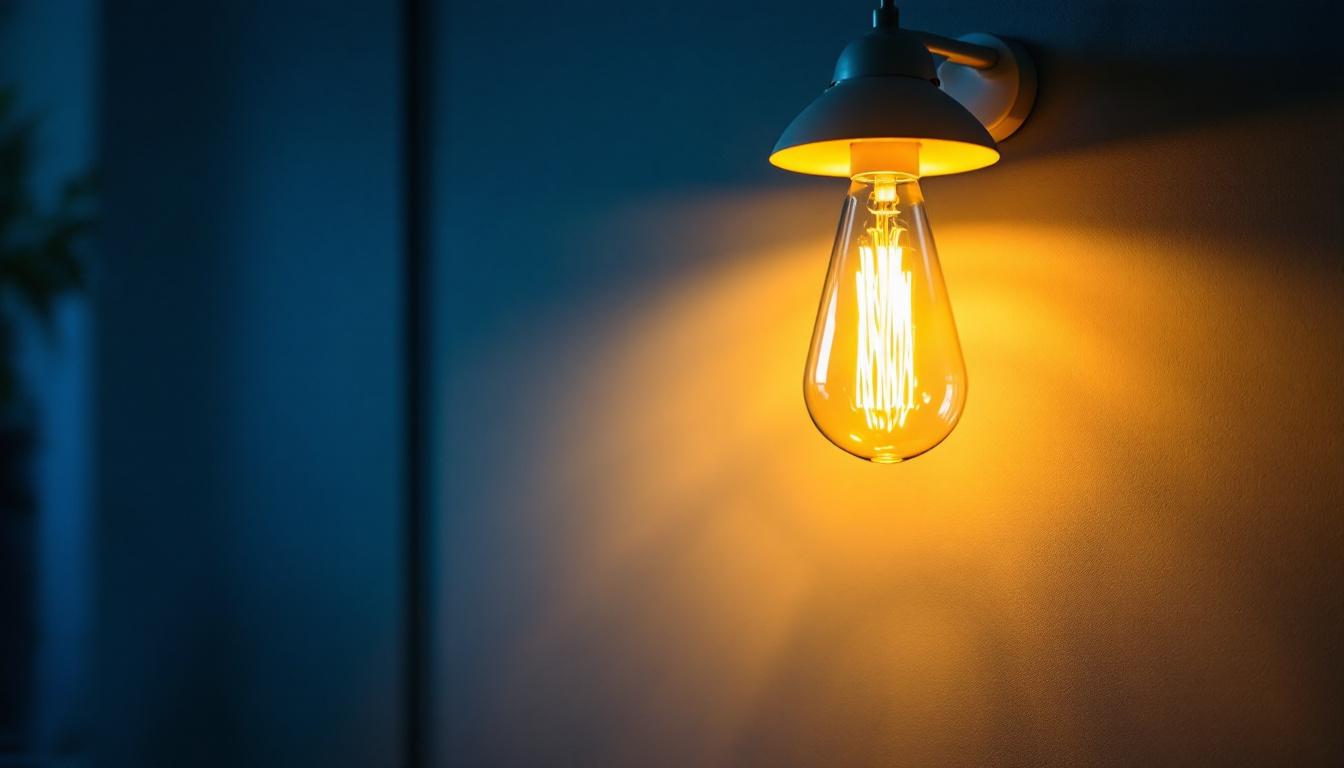
As the demand for energy-efficient lighting continues to rise, LED lights have become a popular choice for homeowners and lighting contractors alike. While the benefits of LED technology are widely recognized, there are several nuances that contractors often overlook when installing LED lights in residential settings. This article aims to shed light on these overlooked aspects, ensuring that lighting professionals can provide the best solutions for their clients.
LED lights are renowned for their energy efficiency and longevity. They consume significantly less power than traditional incandescent bulbs, making them an attractive option for homeowners looking to reduce their energy bills. Furthermore, LEDs have a lifespan that can exceed 25,000 hours, which means less frequent replacements and lower maintenance costs. This durability not only benefits the wallet but also contributes to a more sustainable environment by reducing waste associated with discarded bulbs.
Beyond energy savings, LEDs also offer a range of color temperatures, allowing homeowners to select the ambiance they desire. From warm whites that mimic traditional bulbs to cool whites that enhance productivity, the versatility of LEDs is a key selling point for lighting contractors. Additionally, some advanced LED systems allow for color changing capabilities, enabling users to adjust their lighting to suit different moods or activities, whether it’s a cozy evening at home or a bright, energizing workspace during the day.
Despite their advantages, there are misconceptions about LED lighting that can lead to poor installation practices. One common myth is that all LED lights are created equal. In reality, the quality of LED products can vary significantly based on the manufacturer and the technology used. This variation can impact brightness, color accuracy, and even the overall aesthetic appeal of the lighting. Higher-quality LEDs often use better materials and more advanced technology, resulting in a more reliable product that performs consistently over time.
Another misconception is that LEDs are not dimmable. While many LED fixtures are compatible with dimmer switches, not all are. It’s crucial for contractors to verify compatibility to avoid flickering or reduced lifespan of the bulbs. Educating clients about these nuances can enhance their satisfaction and trust in the contractor’s expertise. Moreover, some LED products are designed specifically for dimming applications, featuring built-in circuitry that allows for smooth transitions between brightness levels without compromising performance. This knowledge can empower homeowners to make informed decisions about their lighting choices, ensuring they achieve the desired atmosphere in their spaces.
One of the critical aspects of installing LED lights is understanding heat management. Unlike incandescent bulbs, which emit heat from the filament, LEDs generate heat from their electronic components. If not properly managed, this heat can reduce the lifespan of the LED fixture.
Contractors should ensure that LED lights are installed in fixtures that allow for adequate ventilation. This can include choosing fixtures designed specifically for LED use or ensuring that there is sufficient space around the lights for heat dissipation. Additionally, using LED bulbs in enclosed fixtures can lead to overheating, so it’s essential to check manufacturer specifications. Furthermore, incorporating heat sinks into the design can significantly enhance thermal management, allowing the LEDs to operate at optimal temperatures and prolonging their operational life. Regular maintenance checks can also help identify any potential overheating issues before they become problematic, ensuring that the lighting remains efficient and effective over time.
When selecting LED lights, many contractors focus solely on wattage, which can lead to confusion. Unlike traditional bulbs, wattage in LEDs does not directly correlate to brightness. Instead, lumens are the measure of light output. Educating clients on this distinction can help them make informed choices about their lighting needs.
For example, a 10-watt LED bulb can produce the same amount of light as a 60-watt incandescent bulb, but the wattage is significantly lower. By focusing on lumens rather than wattage, contractors can provide clients with brighter, more efficient lighting solutions that meet their needs. It’s also worth noting that the color temperature of LED lights, measured in Kelvins, plays a crucial role in the perceived brightness and ambiance of a space. Warmer color temperatures (around 2700K) create a cozy atmosphere, while cooler temperatures (above 5000K) can enhance focus and productivity, making it essential for contractors to discuss these options with clients to tailor the lighting to the specific environment and purpose.
The color temperature of LED lights can dramatically affect the mood and functionality of a space. Lighting contractors should guide clients in selecting the appropriate color temperature for each room. For instance, warmer tones (around 2700K to 3000K) are ideal for living rooms and bedrooms, creating a cozy atmosphere, while cooler tones (5000K and above) are better suited for workspaces and kitchens, promoting alertness and productivity.
Furthermore, the placement of lights can enhance the overall design of a home. Layering different types of lighting—ambient, task, and accent—can create depth and interest in a space. Contractors should consider how LED lights can be integrated into the architecture of a home, using fixtures that complement the design while providing adequate illumination. For example, recessed lighting can be used to highlight architectural features or artwork, while pendant lights can serve as focal points over dining areas or kitchen islands, adding both function and flair.
Additionally, the psychological effects of color temperature should not be overlooked. Research indicates that warmer lighting can promote relaxation and comfort, making it an excellent choice for spaces where families gather, while cooler lighting can enhance concentration and alertness, making it suitable for study areas or home offices. Understanding these nuances allows contractors to create tailored lighting plans that cater to the specific needs and lifestyles of their clients.
As technology advances, smart lighting solutions are becoming increasingly popular among homeowners. These systems allow users to control their lighting remotely, adjust brightness, and even change color temperatures through smartphone apps or voice commands. Contractors should familiarize themselves with the various smart LED options available and how to install them effectively. The integration of smart lighting not only adds convenience but also opens up a realm of possibilities for creating dynamic lighting scenarios, such as setting the mood for a movie night or brightening a space for a dinner party with just a few taps on a screen.
Integrating smart lighting can also enhance energy savings, as homeowners can set schedules and control lights when they are not at home. However, it’s important to ensure that the chosen smart systems are compatible with the installed LED fixtures to avoid any functionality issues. Moreover, the ability to monitor energy usage through smart lighting apps can provide homeowners with insights into their consumption patterns, encouraging more sustainable practices. As energy efficiency becomes a priority, smart lighting systems can play a pivotal role in reducing electricity bills while also contributing to a greener environment. In addition, many smart lighting solutions now offer features such as adaptive lighting, which adjusts automatically based on the time of day or the presence of natural light, further enhancing both comfort and efficiency in the home.
When recommending LED products, contractors should pay attention to energy ratings. Many LED lights come with Energy Star certification, which indicates that they meet strict energy efficiency guidelines. Educating clients about these ratings can help them make more informed decisions and highlight the long-term savings associated with energy-efficient lighting.
Moreover, incorporating energy-efficient practices into the installation process can further enhance sustainability. This includes using timers, motion sensors, and daylight harvesting systems to optimize energy consumption. By promoting these practices, contractors can position themselves as leaders in sustainable lighting solutions.
As LED technology continues to evolve, the importance of recycling and proper disposal of lighting products cannot be overlooked. Unlike traditional bulbs, LEDs contain electronic components that require special handling at the end of their life cycle. Contractors should inform clients about local recycling programs and disposal methods to ensure that old lighting products do not end up in landfills.
By taking responsibility for the entire lifecycle of lighting products, contractors can contribute to a more sustainable future and enhance their reputation among environmentally conscious clients.
Effective communication with clients is essential for successful LED installations. Contractors should take the time to explain the benefits and limitations of LED technology, setting realistic expectations regarding performance and aesthetics. This includes discussing the potential for color variation between batches and the importance of testing fixtures before installation.
Providing clients with a clear understanding of what to expect can lead to higher satisfaction rates and reduce the likelihood of disputes or complaints. Furthermore, offering maintenance tips and guidance on how to maximize the lifespan of LED lights can foster long-term relationships with clients.
After the installation is complete, follow-up services can set a contractor apart from the competition. Checking in with clients to ensure they are satisfied with their lighting and addressing any concerns can enhance customer loyalty. Additionally, offering periodic maintenance checks can help clients maintain their lighting systems and prolong the lifespan of their fixtures.
Such proactive communication not only reinforces the contractor’s commitment to quality service but also opens the door for future projects and referrals. Happy clients are more likely to recommend contractors to friends and family, which can be invaluable for business growth.
LED lights offer numerous advantages for homeowners, but lighting contractors must be aware of the intricacies involved in their installation and maintenance. By understanding the technology, addressing installation considerations, focusing on design and aesthetics, promoting energy efficiency, and prioritizing client education, contractors can enhance their services and provide exceptional value to their clients.
As the lighting industry continues to evolve, staying informed about the latest trends and technologies will be crucial for contractors looking to maintain a competitive edge. By paying attention to the details that are often overlooked, lighting professionals can ensure that their clients enjoy the full benefits of LED lighting in their homes.
Ready to elevate your lighting installations with the best in LED technology? Look no further than LumenWholesale, where we provide contractors with exceptional, spec-grade lighting products at unbeatable wholesale prices. Say goodbye to local distributor markups and hello to a vast selection of industry-standard lighting that promises reliability and high performance for every project. With the convenience of free shipping on bulk orders, LumenWholesale is your go-to source for premium lighting solutions that blend quality, affordability, and hassle-free service. Don’t miss out on the value we offer. Visit Wholesale Lighting at the Best Value today and light up your projects with confidence.

Discover the latest strategies and proven techniques for lighting contractors to effectively utilize Type T LED lamps.

Explore the transformative journey from fluorescent to LED lighting in this insightful article.

Discover how vapor tight fixture lights are revolutionizing the lighting industry, offering unparalleled durability and efficiency.

Discover how the often-overlooked electrical outlet can revolutionize your lighting designs.